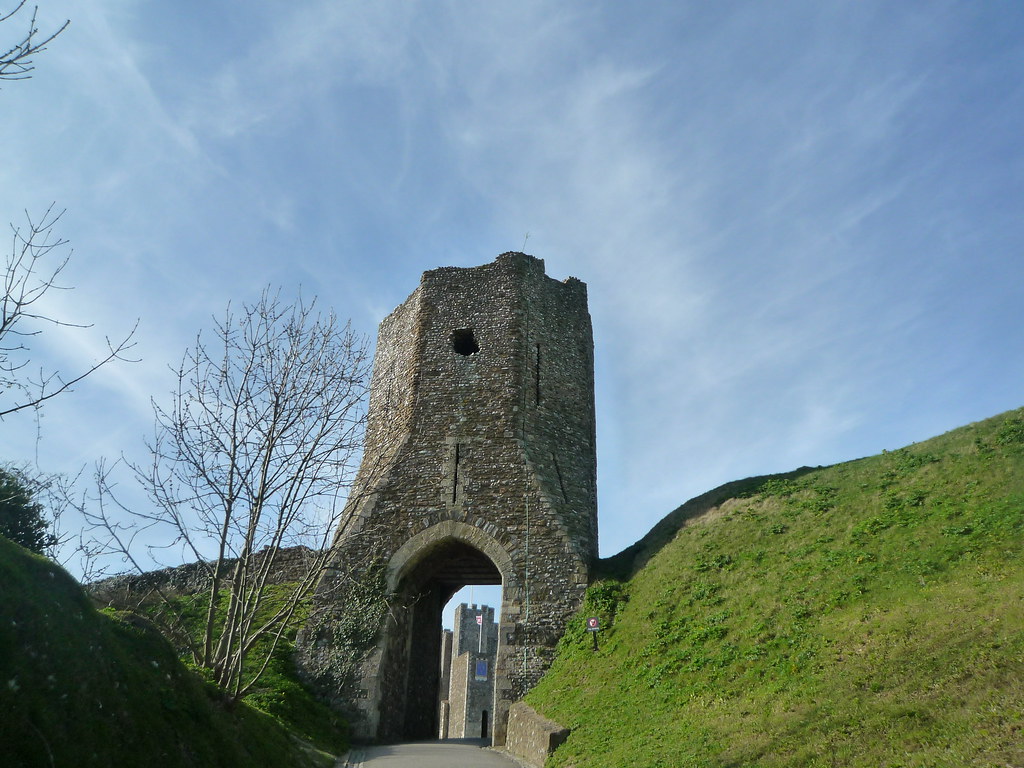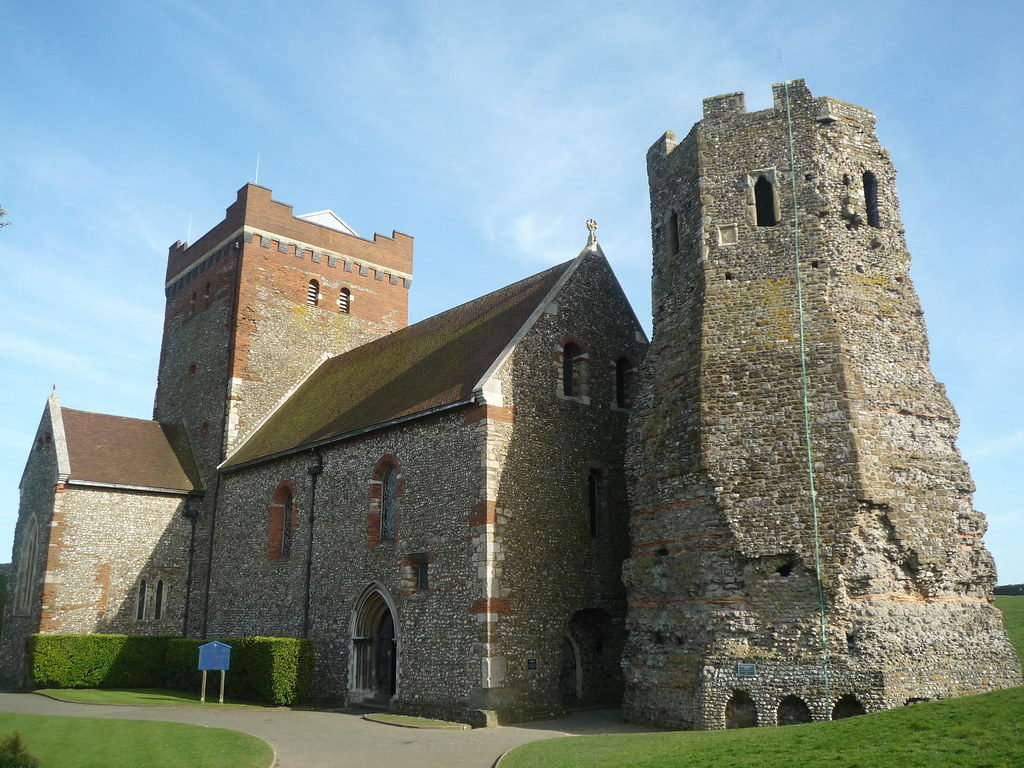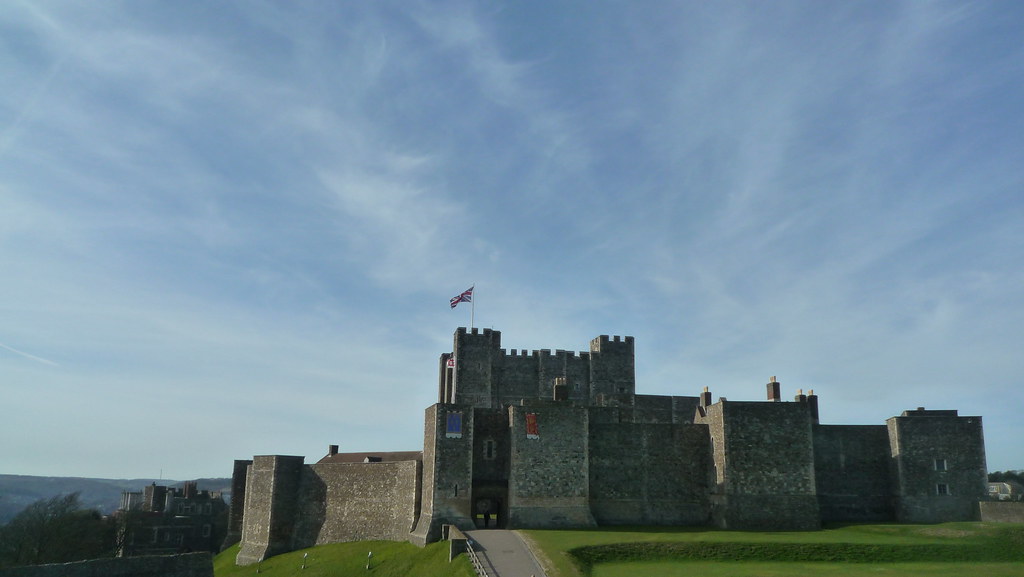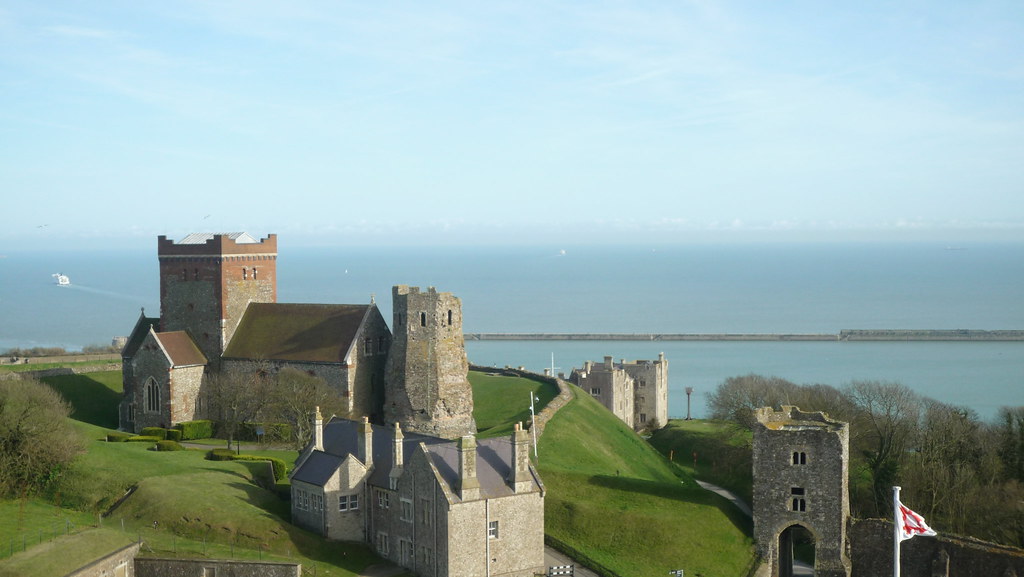Dover
I witnessed Dover's famed white cliffs on the way into the city, but was mostly there for - you guessed it - the castle. It was a fair walk up the steep hills to the castle's gates.
The defensible position on the narrowest crossing from continental Europe has been occupied for a long stretch of time. A Roman lighthouse still stands atop one of the hills within the walls, and a Saxon church was built beside it in order to use the former lighthouse as a bell tower.
The castle itself had an excellent exhibit on the Plantagenet family history. The second language on the displays was now French, which made sense given the proximity to the Chunnel. The whole interior was made to look like the castle would have in its heyday, but somehow did so without being hokey.
I was also impressed by the World War II ere tunnels. The tunnel system under the castle was started as medieval counter-siege secret exits, expanded to include underground barracks for the Napoleonic wars, and then reinforced and expanded again to house the command center of Operation Dynamo, which organized the evacuation of British and French troops from France when the country fell.
I glimpsed the white cliffs again on my way to Canterbury, where I met up with my couchsurf host for a night of cooking naan bread pizza and watching Pulp Fiction.




0 comments:
Post a Comment